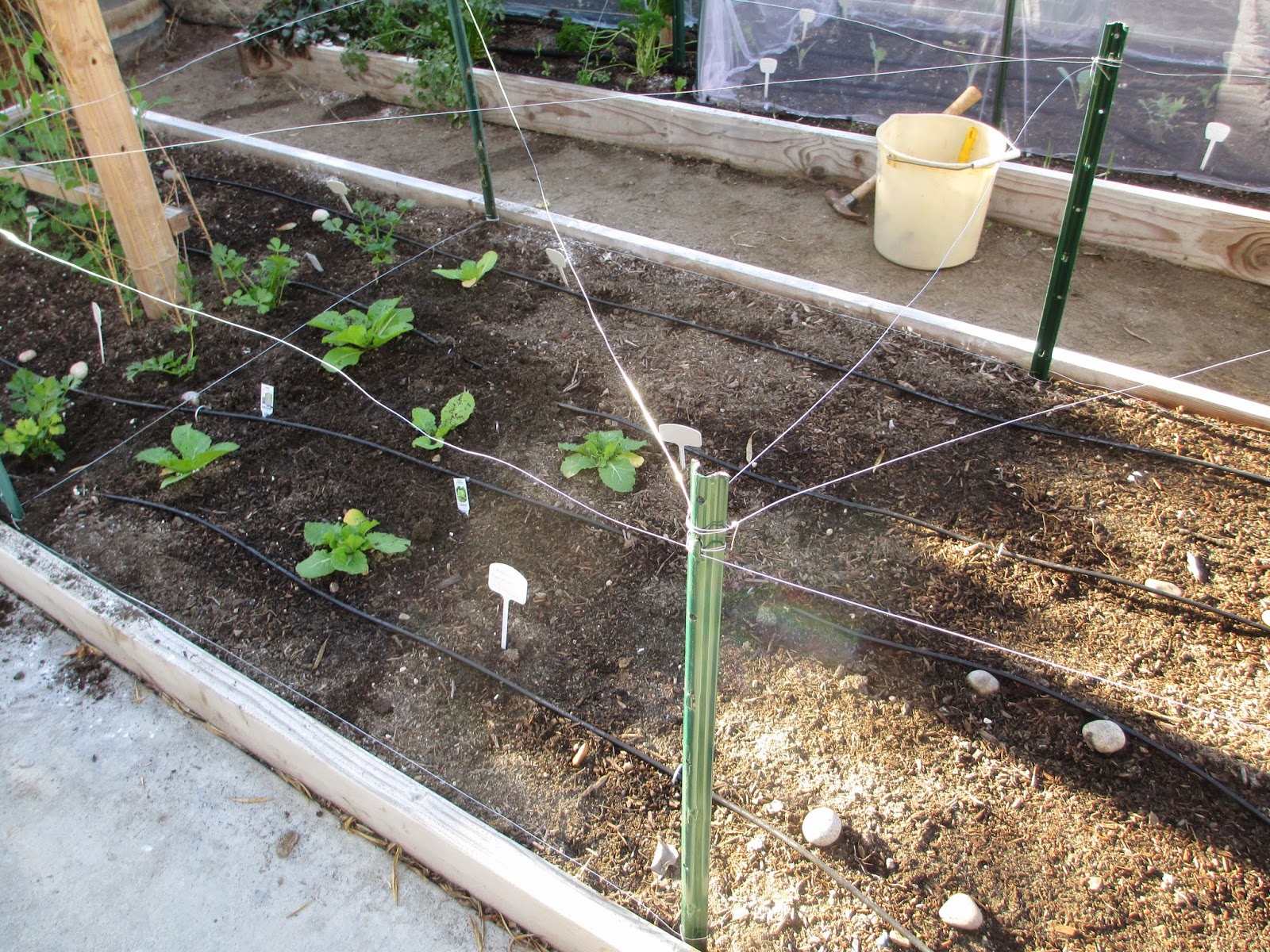Want to keep cabbage worms from eating holes in your plants? Me too. I've tried checking the plants daily and removing the worms as they hatch, but miss a few and the next day the plants are half eaten. This year I'm covering the plants with tulle to keep their butterflies from laying eggs on the leaves. No eggs means no worms to destroy the cabbage, kale, broccoli and cauliflower.
 |
| Cabbage worm eggs on the underside of my cabbage leaf. The butterflies are creamy-white with one or two black dots on the wings. |
My first attempt at making a cabbage row cover uses bamboo poles and it works well, but it is small. Read about it here.
 |
| Arch-shaped cover made of bamboo poles and tulle. |
I realized after it was made it that the arched shape reduces the space inside for the plants to grow. What was needed was a cube-shaped cover, and this is the design that came to me early one morning while enjoying my coffee and pondering the plight of my kale.
The box shape will give my plants more room to grow. Why not dream big?
It's made of metal poles, 20 gauge wire, tulle and small hinged hair clips.
 |
| The hair clip secures the tulle to the wire "frame". |
The idea is you pound stakes in the corners, then you make the cube-shaped "frame" by wrapping the wire around the bottom very close to the ground. Pull the wire tightly so the frame is not floppy. It helps to wrap the wire tightly around each post to keep the wire from being too loose.
Then wrap wire around the top. I also did a diagonal piece across the top to keep the tulle from sagging.
Here's another example in another bed.
Take care to tuck under the ends of the wire to avoid snagging the tulle.
Arrange the tulle over the "frame".
Cut the tulle long enough that you have a couple of inches to fold over the wire and secure it with the clips.
The fabric was wide enough to cover three sides and the top, but this side was not covered so I cut another piece to fit with edges overlapping a few inches.
Here's the finished cover. It's tall because I have high hopes for tall kale plants.
You can water right through the tulle or unclip the fabric from the bottom for (relatively) easy access.
If you decide to make this type of cover, here are some considerations:
Tulle is sold by the yard at most fabric stores and it is usually 54 inches wide. I got mine for less than one dollar per yard. There are two types of tulle; matte and shiny. I chose matte because I didn't want the covers to by shiny. There is no particular reason I chose these colors except I like them.
Measuring your space in advance will help you to decide how to arrange the tulle and how much fabric you will need. It will also help to consider the width of the fabric when designing your frame.
Try to arrange the tulle so that there are as few cuts as possible to minimize the gaps where insects can get inside.
Tulle is relatively delicate, so avoid draping the tulle over sharp sticks or rough posts which can tear it. Draping it over the wire instead of the posts will make it less likely to tear. In some places you may need to cut holes into the tulle and poked the post through the hole.
The hair clips were purchased at the dollar store, 30 clips for one dollar was a bargain.
I will be interested to see how these hold up in a wind storm. As I was making them I just kept reminding myself that they only have to keep out butterflies, not lions.
So far, so good.
















How does it stand up to the sun? Will it last about one season?
ReplyDeleteThis is my first experiment with these so I am not sure how long they will last. They held up beautifully through a recent wind storm with 30 mph winds. So far, no cabbage worms!
DeleteDoesn't last thru one season. Now I keep my torn holy pieces and cover just the dirt with it to keep birds from looking for bugs and throwing my soil out. There is a farm store that sells a product cheaper and long lasting but I don't know the name. Sorry.
DeleteI chosesalt tiles for sauna
ReplyDeletefor their durability and beautiful natural texture.